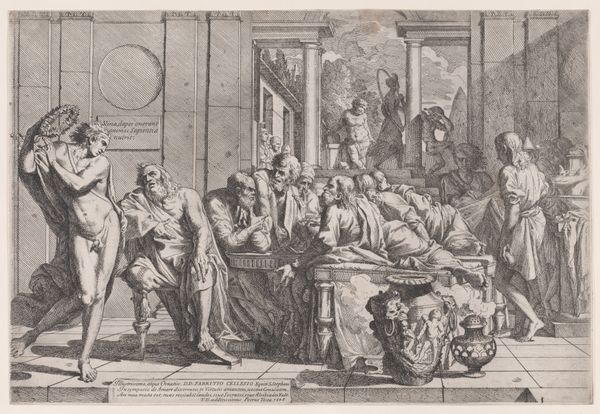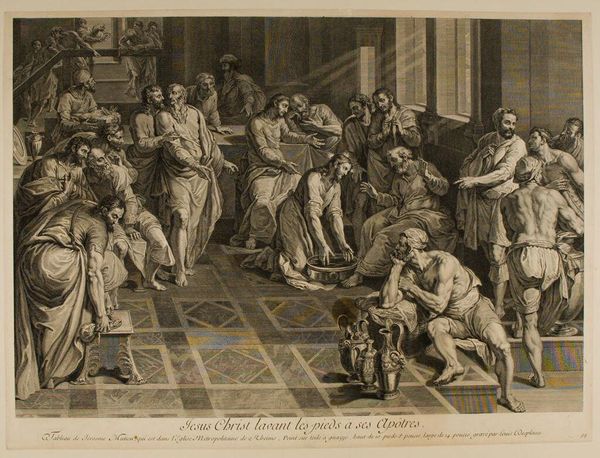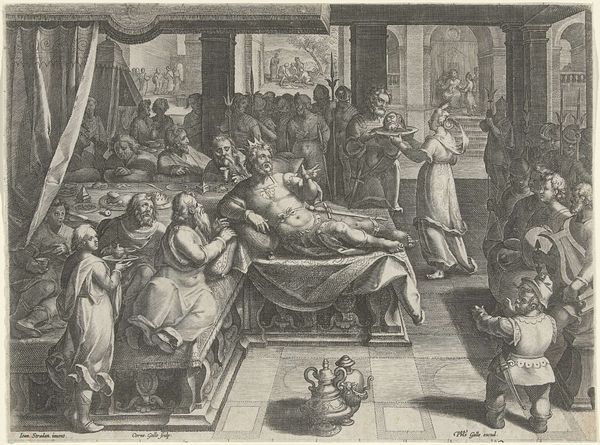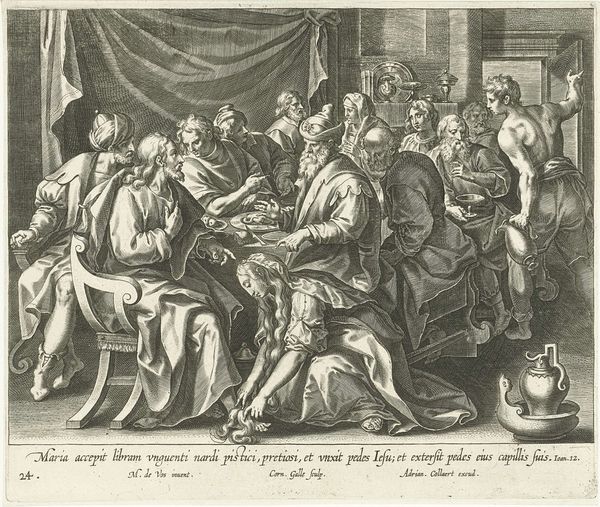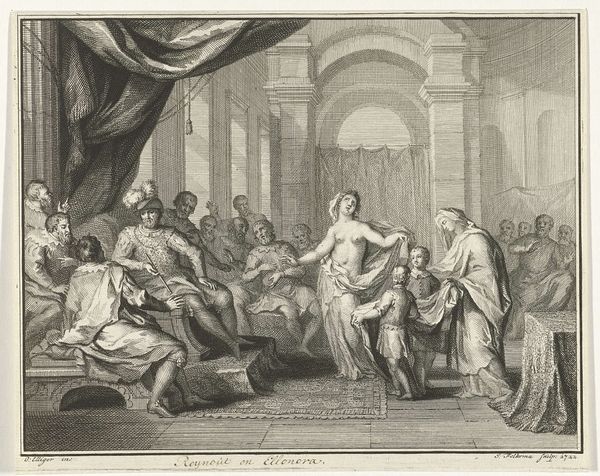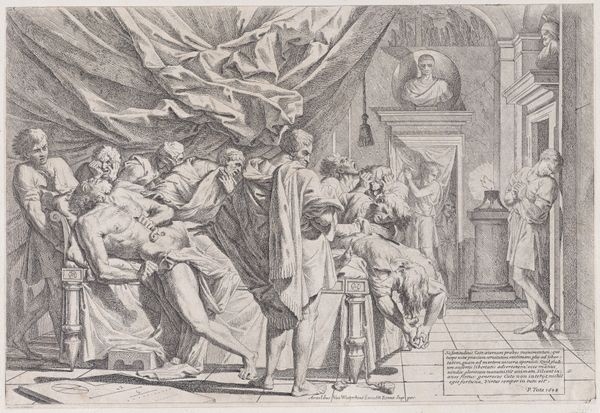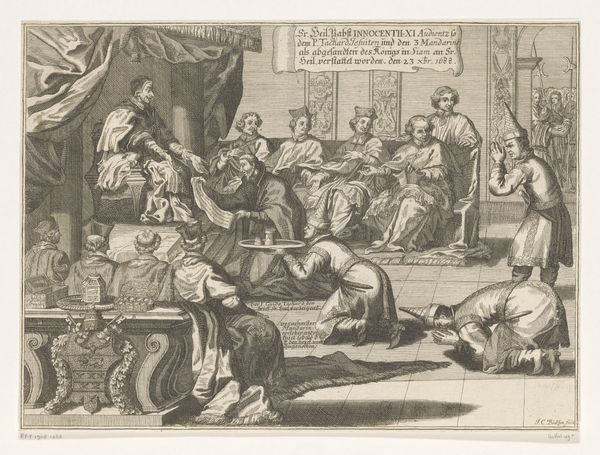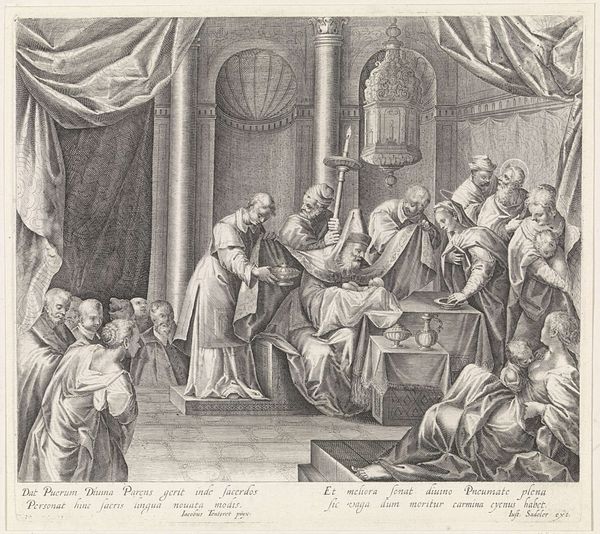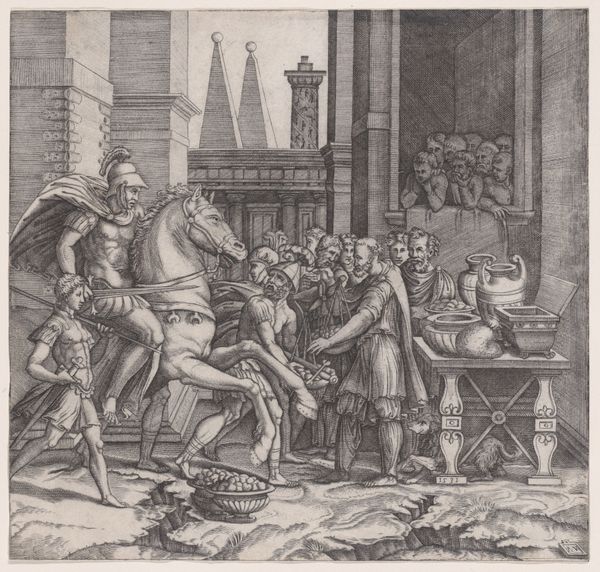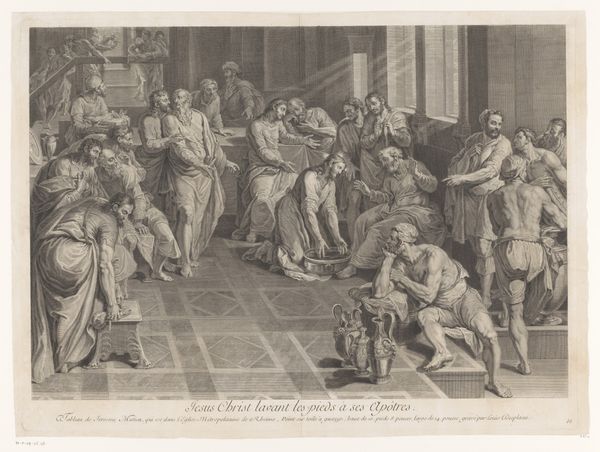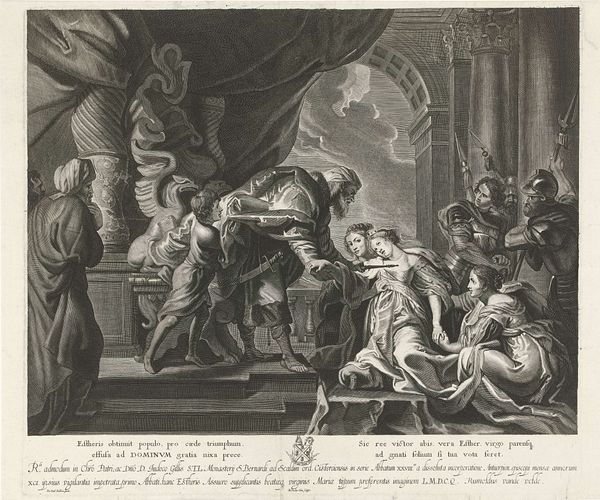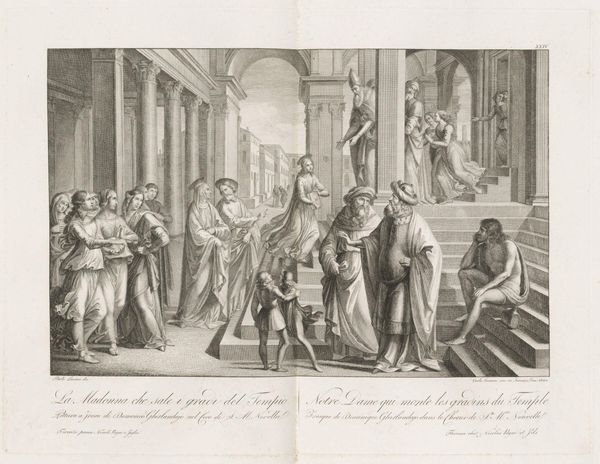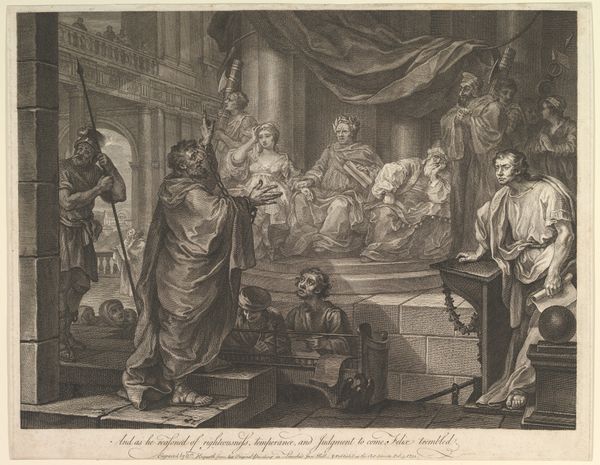
engraving
#
narrative-art
#
baroque
#
old engraving style
#
figuration
#
pen-ink sketch
#
line
#
history-painting
#
engraving
Dimensions: height 483 mm, width 655 mm
Copyright: Rijks Museum: Open Domain
Johannes Collin made this print, Voetwassing, sometime between 1600 and 1700. It’s an etching, which means the artist used acid to bite lines into a metal plate, which was then inked and pressed onto paper. This was a printmaking technique that allowed for relatively quick reproduction and circulation of images. Looking closely, you can see the fine, precise lines that define the forms and create shading. Collin was clearly a skilled craftsman to achieve this level of detail. Printmaking allowed artists to create multiple copies of an image, making art more accessible to a wider audience. But this also meant that the labor of the artist became a commodity, part of an emerging market for images. The image itself depicts a scene of foot-washing. The act of washing feet, usually a task performed by servants, is transformed into a powerful symbol of humility. Collin's print invites us to reflect on the materials and processes behind its creation, and how these relate to broader issues of labor, social status, and devotion.
Comments
No comments
Be the first to comment and join the conversation on the ultimate creative platform.
